Advertisement
'For people and planet’: Earthships are off-grid refuges made from beer cans and tires
Resume
Editor's note: This segment was rebroadcast on Aug. 15, 2024. Click here for that audio.
Find out more about our Reverse Course series here.
It takes a lot of fossil fuel to heat and cool a typical American home. But it doesn’t have to be that way.
In the high desert of northern New Mexico, a subdivision of unique off-grid houses is a model for building more energy-efficient homes. They’re called Earthships.
And you’d be forgiven for thinking the construction site of a new Earthship looks like the scene of a fraternity party.
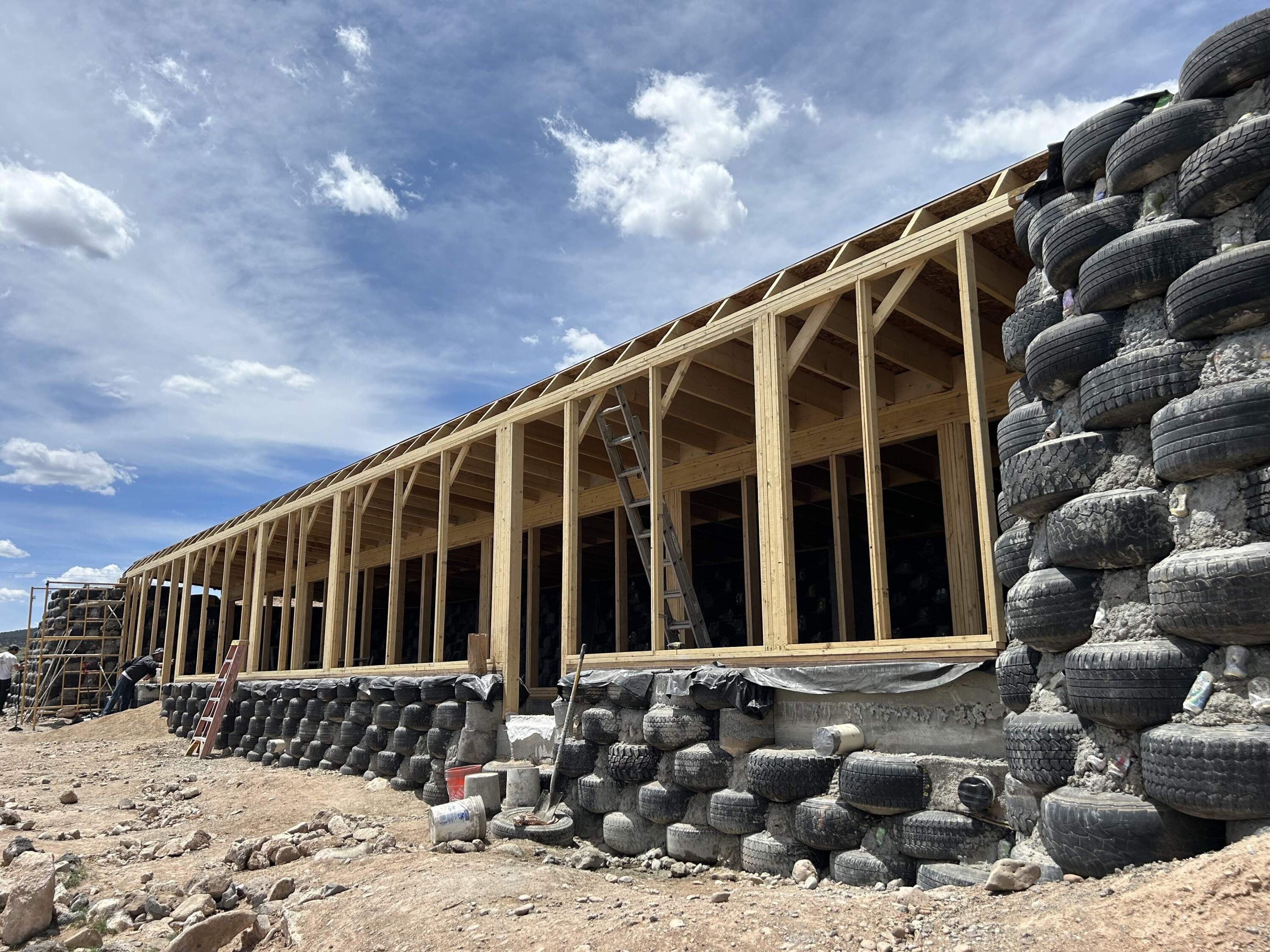
That’s because the buildings are made with old aluminum cans and discarded tires. With a bag of empty beer cans piled at his feet, construction worker Marcus de la Ossa crushes each one and then presses it into a wet glob of concrete.
“It’s pretty gnarly,” he says, “but it’s helping the planet along with people.”
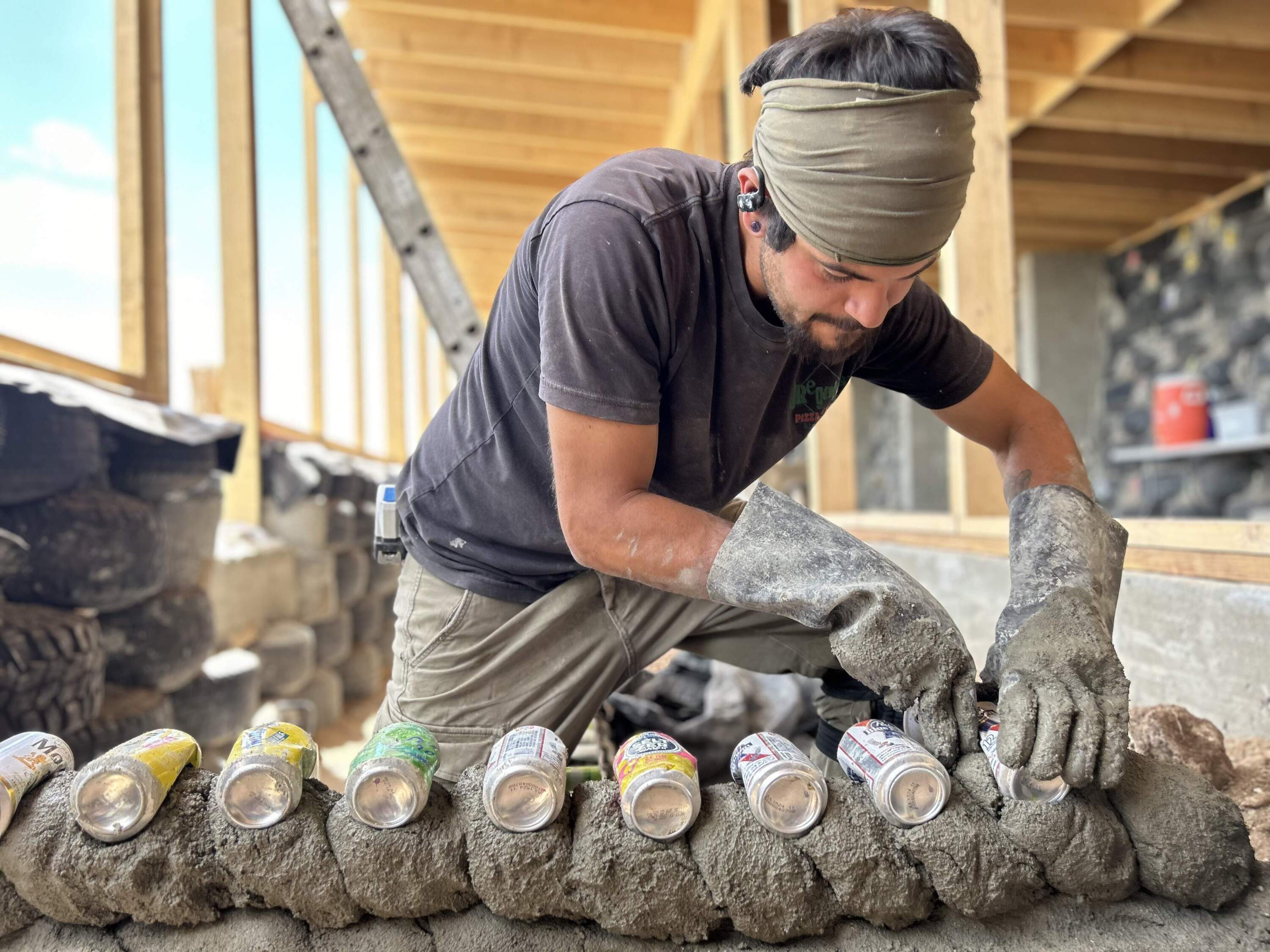
The front of this unfinished building faces south — toward the sun — with expansive views of the Taos Mountains. The back of the house is dug into the earth. The entire north side is a solid wall of tires stacked like bricks.
“These tires are packed solid with dirt,” says construction manager Deborah Binder.
Earthships work the same way caves do, Binder says. The thick tire walls — and a huge dirt berm behind them — absorb heat from the sun and create an envelope of insulation. Sourced from the local landfill, the tires keep the house warm in the winter and cool in the summer.
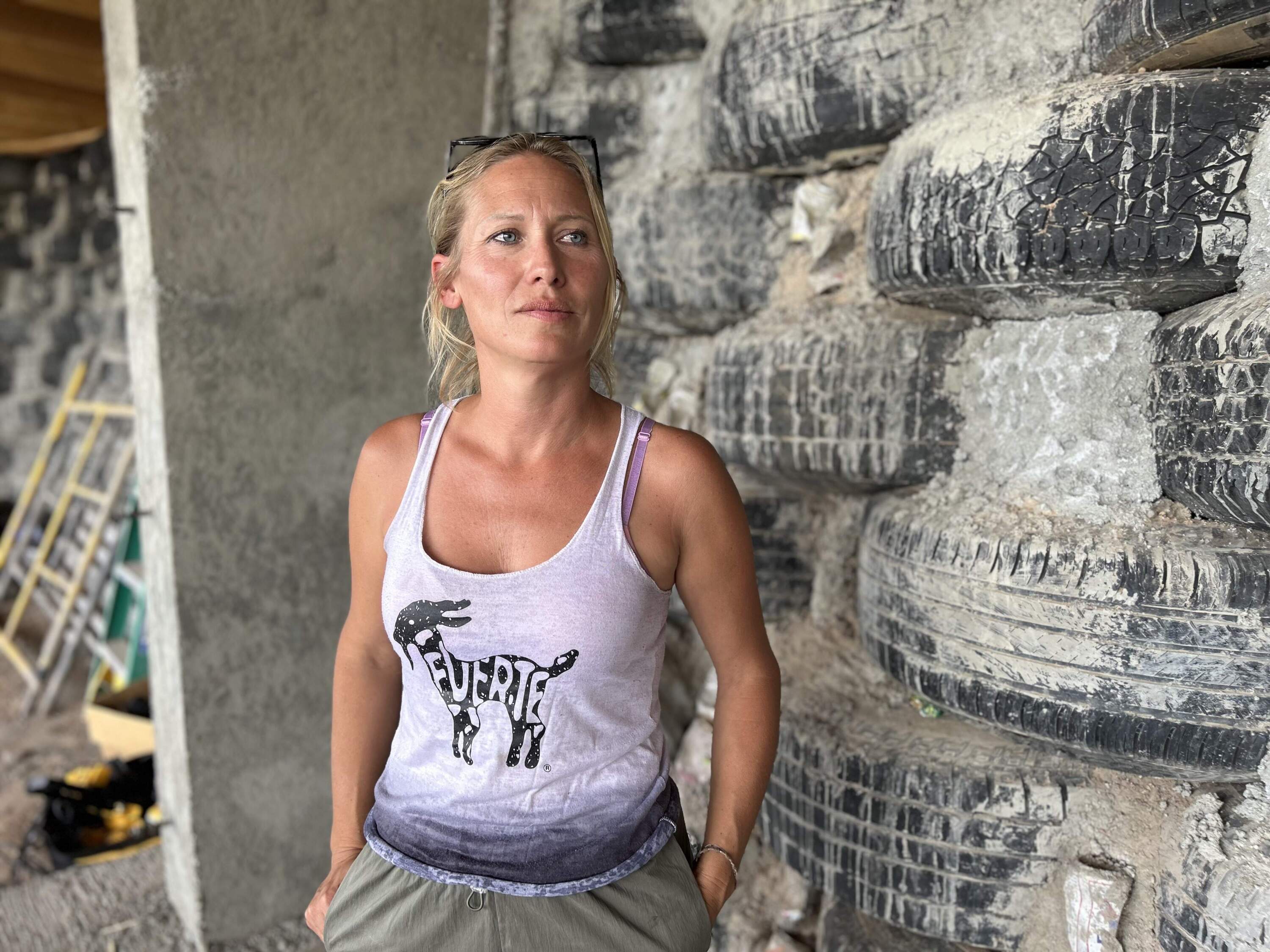
“People look at us really weird because most people go to the landfill to drop off things — and so here we are carrying things out of the landfill,” Binder says. “We actually have to permit every job site as if it was its own little dump for us to be able to have tires here.”
Earthship Atlantis
Don’t be fooled by the trash that goes into making these Earthships. The final product looks like a piece of art.
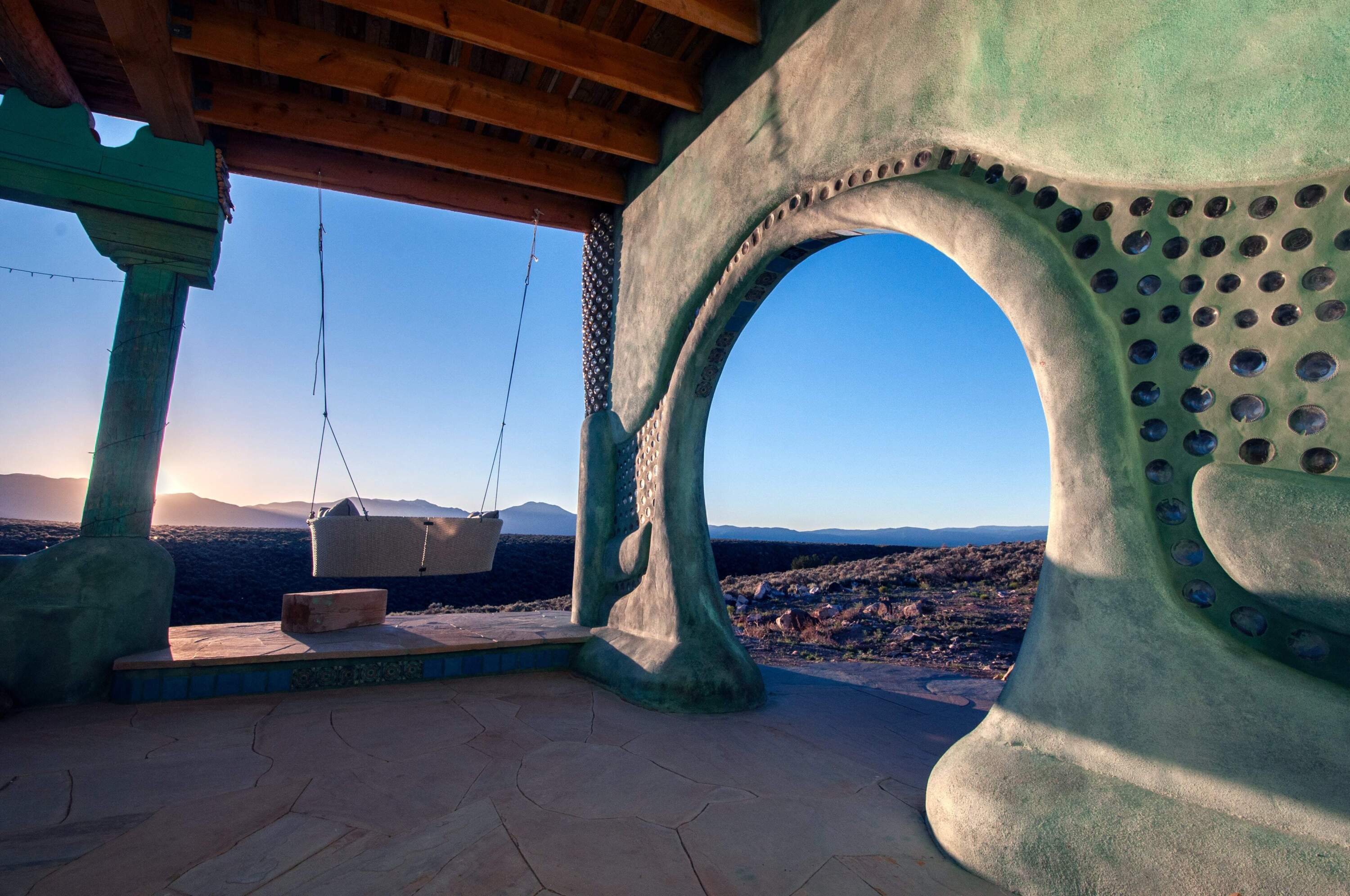
The nearby Earthship Atlantis is finished in smooth turquoise plaster that emerges from the sagebrush like a gem.
“I particularly like this one. I played with it a lot,” says architect Michael Reynolds, the mastermind behind the Earthship concept who built an early prototype in the 1970s.
Inside Atlantis, the space is bright. Exposed beams span the ceiling. One of the most prominent features is the indoor garden. It’s bathed in sunlight through a long bank of south-facing windows.
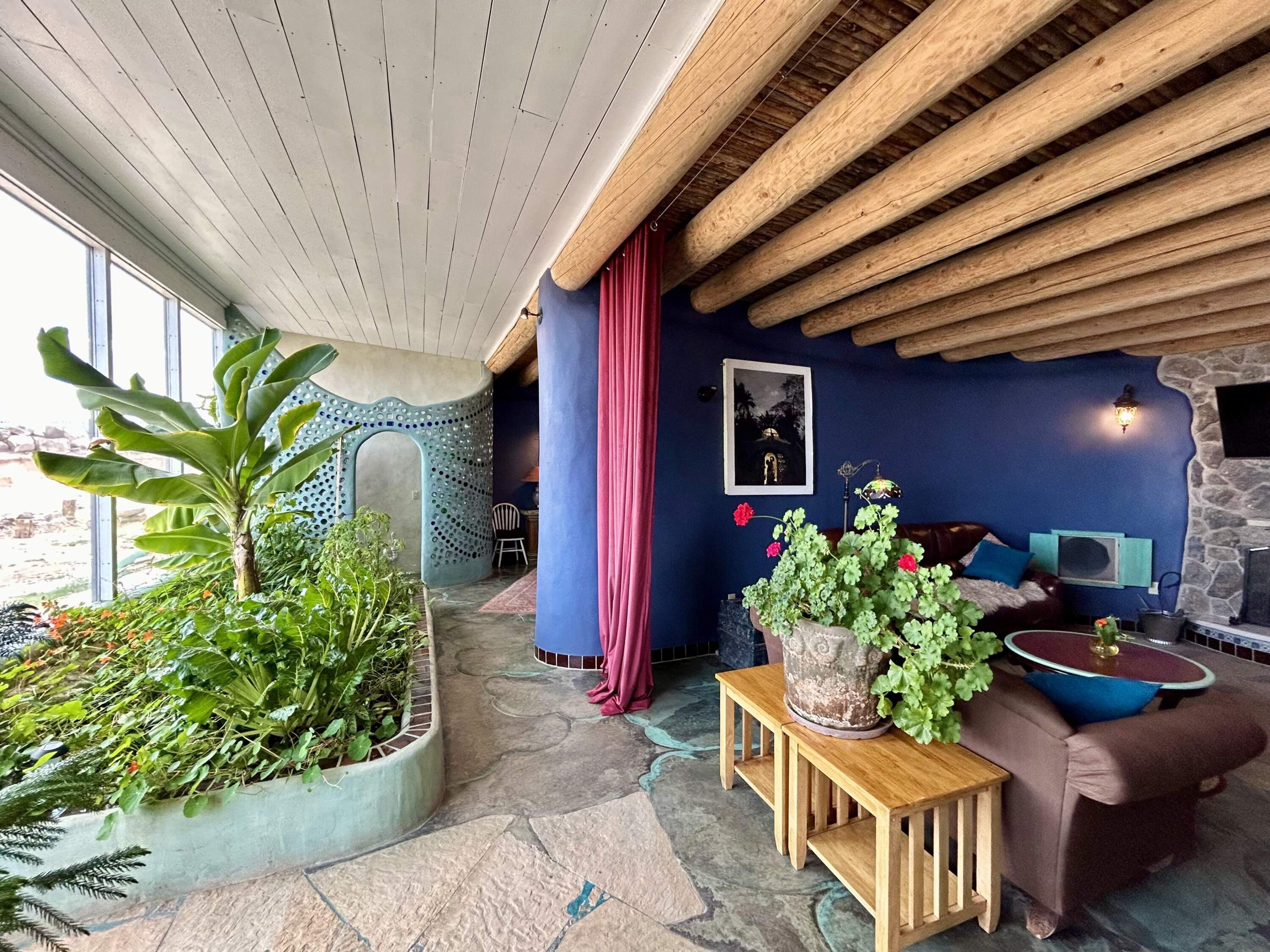
A crop of chard is thriving in the garden. So are a few healthy tomato plants and a banana tree.
“It’s a happy-looking planter,” says Reynolds. “This is what the earth looks like naturally when there’s a lot of water.”
There’s not normally a lot of water in northern New Mexico. But this house recycles every drop that goes down the drain. Earthships rely entirely on rainfall collected in cisterns behind the house.
After that water gets filtered for use in the kitchen or the bathroom, it’s piped to the garden planters to water the bananas and chard.
Whatever is left over is pumped back to the bathroom to flush the toilet, and “then we take it outside for landscaping,” Reynolds explains. “So there’s really four uses of the same water.”
The area around Taos gets about 12 inches of rain and snow a year. When you use that water four times, Reynolds says it becomes 48 inches “and that’s enough to live on.”
The Earthship is totally self-sufficient. There’s no air conditioning. No heater. And the house is designed to hover near 70 degrees year-round.
Eight solar panels power the lights and the refrigerator. And a tank of propane lights the stove.
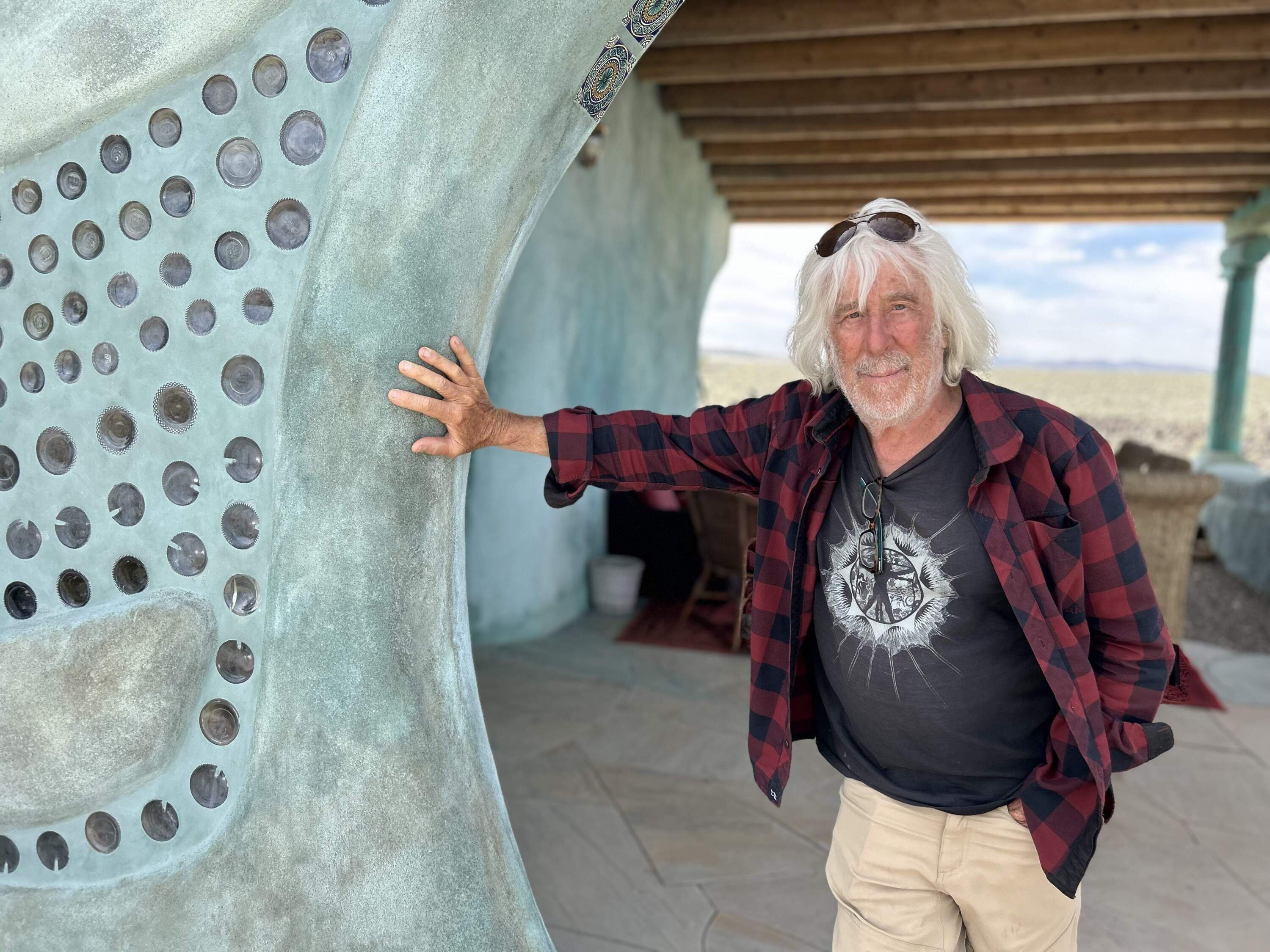
“If you can go into a home that’s going to feed you, give you water, keep you warm and take care of your sewage on site, you don’t give a damn what happens out there unless [Vladimir] Putin drops a bomb right on this building,” Reynolds says. “This is for people and planet. I am on a mission.”
‘A real struggle’ with building materials
Reynolds has been tinkering with the design for 50 years. Today about 100 Earthships are dug into the earth just outside of Taos, creating a futuristic — somewhat dystopian-looking — subdivision.
The Atlantis is on the market for $825,000 but most people can’t afford that. Reynolds’ Refuge model is a smaller, scaled-down version that’s about half the price.
Rachel Preston has a different concern.
“The tires [are] a real struggle,” says the historic building architect who lives in Tesuque, New Mexico. She’s been following Reynolds’ experiment in nearby Taos for years.
“I always had this impression that because they were growing out of the earth that they were really made out of earth,” Preston says. “It never occurred to me, for instance, that they might be polluting the site.”
Preston worries about the chemicals from discarded tires that could make people sick. “What are we doing with the gas that we know is there?” she says.
Reynolds downplays the threat. He says by the time old tires reach the landfill they’ve already off-gassed their poison and that other mass-produced materials used in couches, carpets and countertops pose a much greater exposure to chemicals.
Advertisement
But Preston asks, why take the risk?
“In New Mexico, we’ve been building with adobe for 1,000 years and stone for 1,000 years before that,” Preston says. “I know those materials and I trust them.”
Life inside an Earthship
Nadine Lollino moved into an Earthship near Taos with Trey Donovan Drake just before the pandemic. Their yard has sweeping views of the mountains.
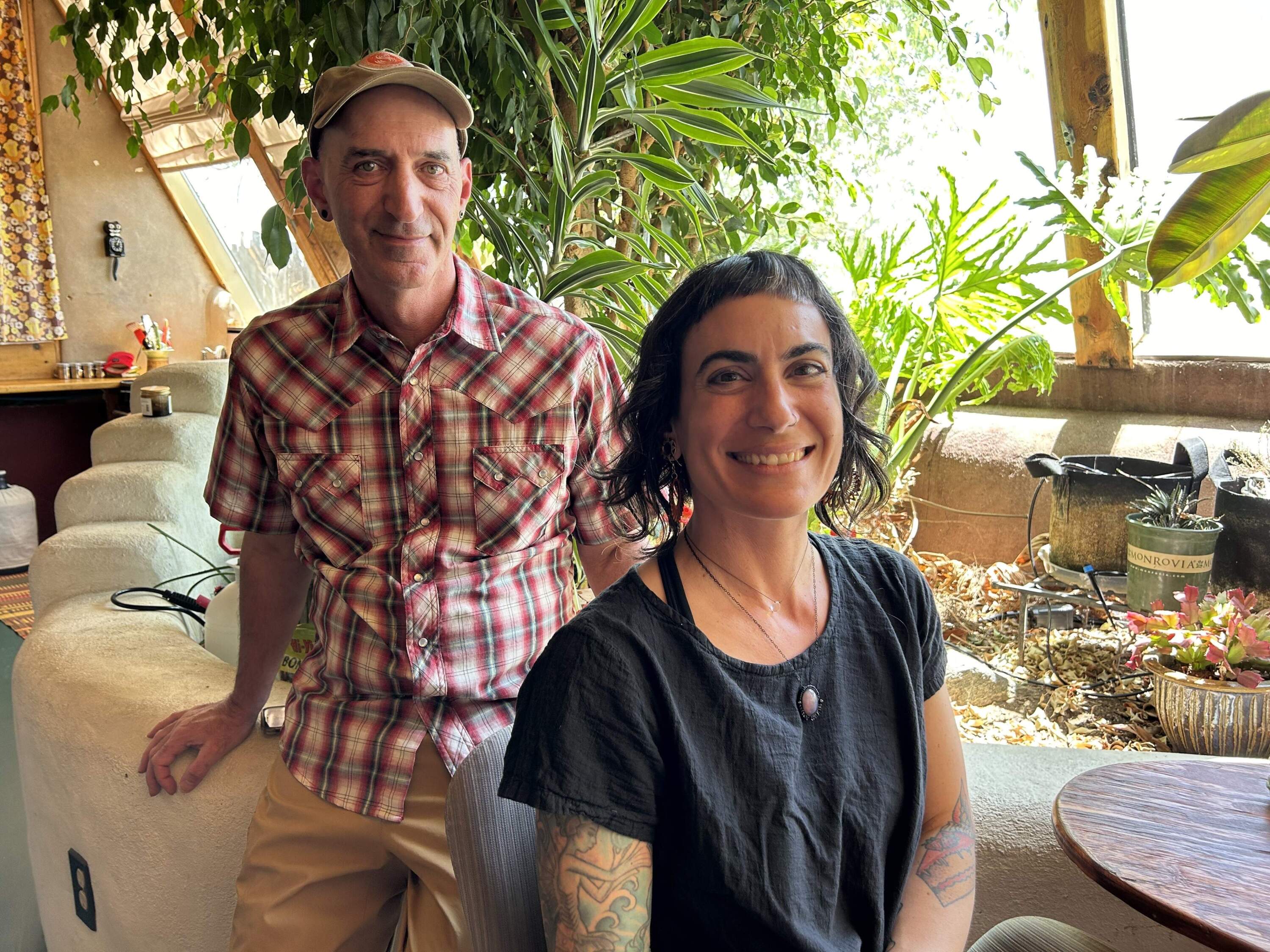
A few finches flit happily around a feeder in the elm tree. “It’s just really pleasurable,” Lollino says of the wild space around her. “We are completely surrounded and in it at all times.”
Their house was built in the 1990s. It’s an early model without the ventilation system that’s now standard in a modern Earthship. And it was hot inside the house near the south-facing windows of the indoor garden.
While the planters were full of plants, the couple finds it challenging to grow a variety of productive food crops. But other parts of the home work perfectly well.
Standing on the metal roof of his house, Donovan Drake points out how the roof creates a v-shaped funnel to catch the rain. He has three cisterns that store up to 6,000 gallons of water.
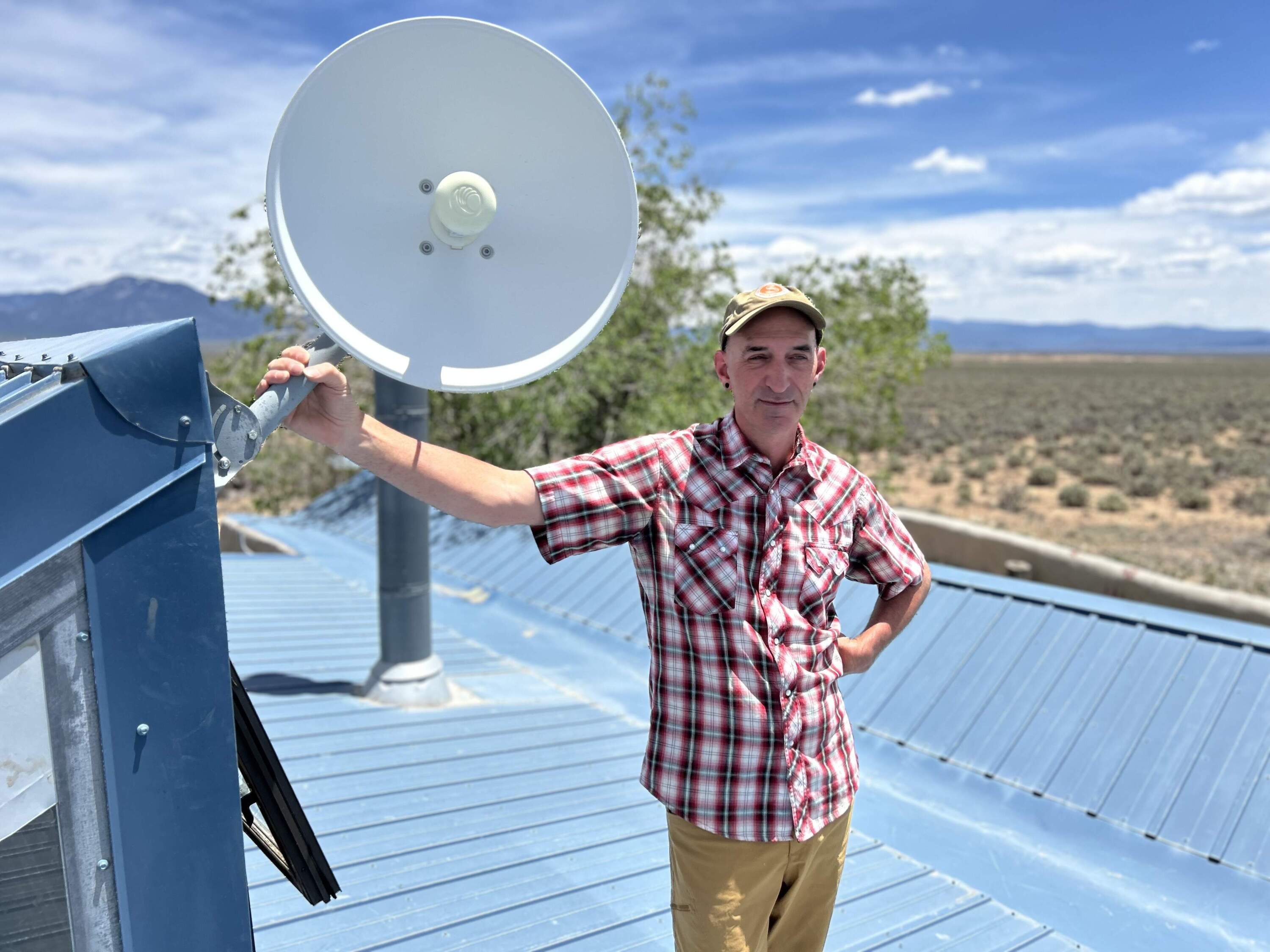
“We’ve been in a drought condition since we moved here — rather severe drought,” he says. “Even in those conditions, we haven’t run out of water.”
His power system has also functioned as expected. Under the blazing sun, a panel of 12 batteries charge through the solar panels attached to the house. There’s never been a power outage since moving in.
“I have been quite blown away at how well it’s performed — and this is an old Earthship,” Donovan Drake says.
But it’s not always easy to live here. The couple says storage is terrible. The drive is about 20 miles from town — one way. They miss the beach and the amenities from their past lives in Chicago and California.
But the quiet here is beyond comparison.
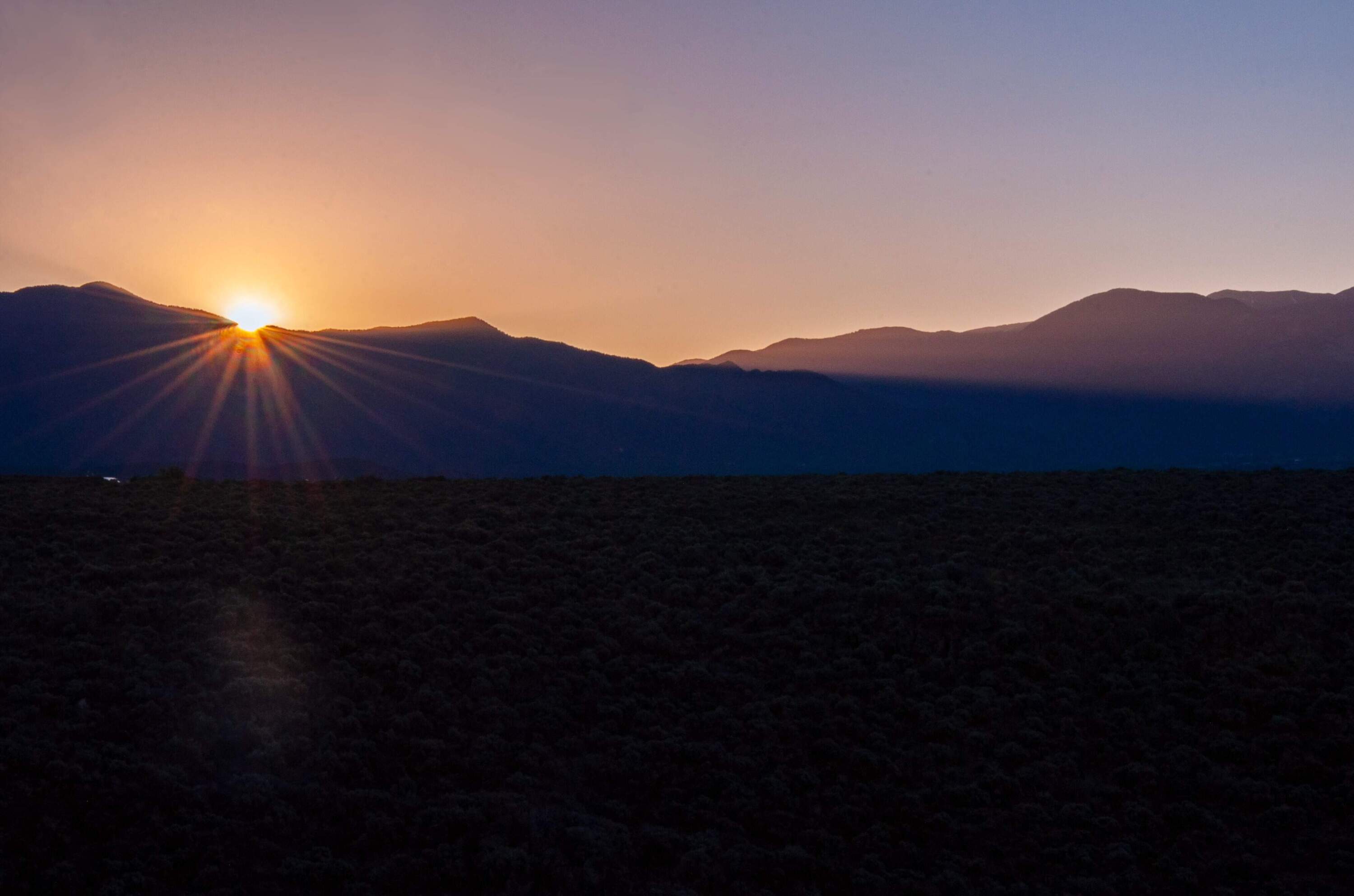
“I need this,” Lollino says. “We all need that quiet time to reground and to reconnect. When I can have that on a continual basis every day, that really helps me to keep everything in life in perspective.”
This segment aired on June 24, 2024.
